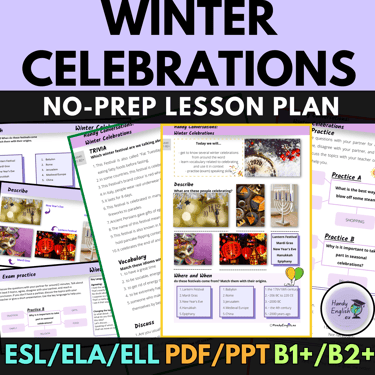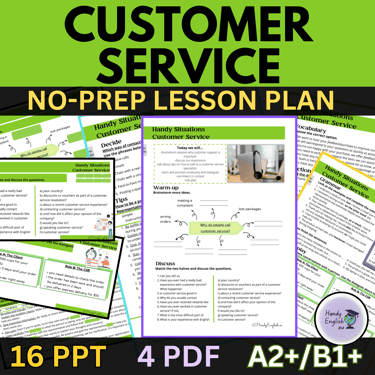[BLOG] Teaching Adults: Strategies and Insights #1 - Why I Teach Adults
An honest, personal reflection on why one ESL teacher chose to focus on adult learners. From lesson planning based on real-life needs to the joy of watching students succeed, this post explores the benefits, challenges, and unique rewards of teaching English to adults.
Kaya
8/11/2025
Please keep in mind that the opinions posted on this blog are my own.
Everybody might have a different experience and opinions, and that's OK.
Let’s be honest - most ESL teachers have their favourite age group, whether they admit it out loud or keep it locked in the “unprofessional confessions” drawer. Some thrive in the delightful chaos of young learners, others adore the snarky charm of teenagers. Me? I made a very conscious decision to focus on adults.
And no, it’s not just because they don’t throw crayons across the room or burst into “Baby Shark” mid-grammar drill (though, let’s be real, that’s a perk). The truth is, working with adult learners is not only fulfilling - it’s professionally enriching, personally inspiring, and sometimes surprisingly heart-melting.
Here’s why I chose this path - and why I have no plans to stray.
I Prefer to Focus on One Age Group
When I started out, I was the “yes” teacher. Kids? Sure. Teens? Absolutely. Retirees? Why not. But after a while, I realised I was essentially juggling five different brain-versions of myself - and not in the charming, multiverse kind of way.
Focusing on adults wasn’t about avoiding younger learners; it was about going deep instead of wide. Tailoring everything to their world, their goals, and their quirks. It also let me carve out a niche and develop resources that feel laser-aimed at one audience, rather than trying to keep every possible syllabus straight in my head like some sort of educational octopus.
I Learn So Much from Them
One of the greatest (and most unexpected) perks of teaching adults? I’m constantly the student. My classes have included everyone from dentists to theatre techs, from CEOs to football club reps. Every lesson is like a live-stream of human experience - minus the buffering, of course.
The stories, insights, and random industry gossip? Pure gold. Some days it’s like having my own personal Netflix docuseries, except I can ask follow-up questions and occasionally assign homework.
Everybody Brings a Different Perspective
Teenagers tend to operate within similar worlds - same school schedules, same memes, same cafeteria lunches. Adults? Whole different story.
One might need English for international business calls, another to help with their kid’s homework, and another just to understand their sarcastic brother-in-law. The variety keeps things unpredictable, which I love. Every activity becomes a co-created experience, shaped by their input as much as by my teaching.
I’m not just teaching to them - I’m teaching with them. And that’s a big difference.
I Keep My Own English Sharp
With adults, there’s no phoning it in. They’ll ask “but why is it like that?” and not let you off the hook until you can explain it in a way that actually makes sense.
That means I’m constantly revisiting grammar, learning new vocabulary, and polishing my explanations. Sometimes it’s humbling (“Wow, I haven’t thought about the present perfect like that in years”), sometimes it’s exhilarating (“I finally found the perfect way to explain conditionals without everyone looking like they need coffee”). Either way, it keeps my brain well-fed.
I Design Lessons Based on Real Needs
Because my students actually use English - at work, on holiday, in family conversations - lesson planning becomes highly targeted. I don’t just teach from the textbook because it’s there; I design lessons that will make a difference tomorrow morning.
From survival English to industry-specific jargon to “how to politely but firmly nudge a stubborn supplier by email,” every class has a purpose. And honestly, there’s something addictive about knowing my students will walk out of class and immediately put what they’ve learned into action.
Their Progress Is Visible - And Beautiful
The joy of teaching adults is that you can see the results. Not in a gradebook, but in real life:
-A client presentation that finally clicked.
-A holiday dinner ordered without panic.
-A deal closed with confidence.
-A long-awaited conversation with a relative, no translator needed.
When they come back to class glowing and say, “I did it!” - there’s no better high.
Sometimes, We Even Become Friends
I know, boundaries are important. But the truth? Over time, some students become more than just names on my attendance sheet.
We share stories. We laugh (a lot). We cheer each other on. I’ve bonded with students over books, cats, cooking disasters, and mutual disdain for complicated train timetables. Adults aren’t just learners - they’re fully-formed humans with fascinating lives, and it’s impossible not to connect.
Teaching adults isn’t just a professional choice - it’s where my skills, personality, and curiosity intersect. I get to build lessons that matter, relationships that last, and watch real-world change unfold in front of me.
If you’re deciding on an age group to teach, don’t just follow the job ads. Follow your energy. If you like structured chaos, smart humour, and conversations about how to finally pronounce “thorough,” you might just be an adult ESL teacher at heart, too.






Get in touch!
Copyright Handy English 2021
”I used this with an adult ELL tutee of mine. I appreciate that the language was accessible for multiple proficiency levels, but the content wasn't obviously geared for children and still useful for older learners.”
August 7, 2023
”Another great resource from Handy English! I used it to give my students more in-depth practise into quantifiers and restaurant language. It's great resource and can be used after the students learn the basics of language for the restaurants and quantifiers. Definitely helped solidify what they learnt.”
February 5, 2023
”Love this resource. Great for fast finishers and also those in small ESL groups. Great for all macro skills as discussion and brainstorming is a great precursor for writing submissions.”
- Gail M.
June 25, 2023
Here's what other ESL Teachers say
Handy English: 4.8/5
”This was a wonderful resource for my students. It helped me introduce them easily to new concepts and it was quite engaging. Thanks!”
- Kiara B.
October 10, 2023
”Great resource for learning vocabulary, which supports comprehension and speaking skills.”
- Lori-Ann W.
September 29, 2023
”What a great way to get a healthy debate going. My students struggle with impulse control and they all have kept it kind and appropriate.”
- Alicia H.
September 17, 2023






